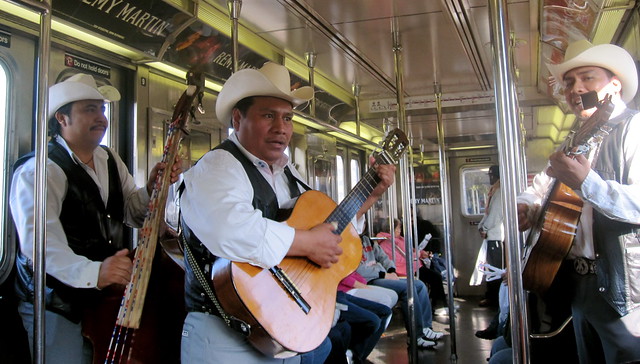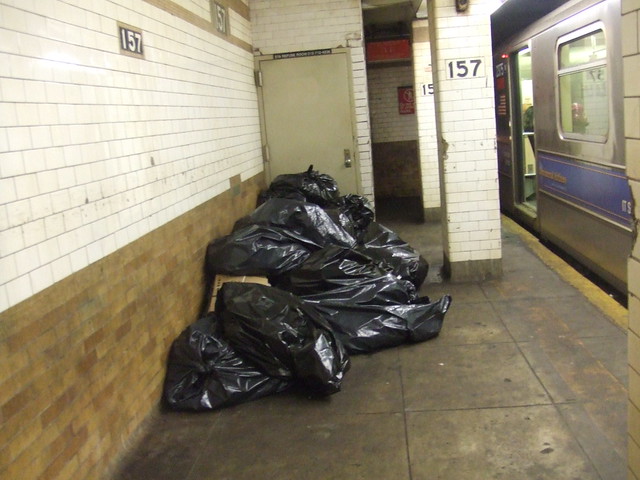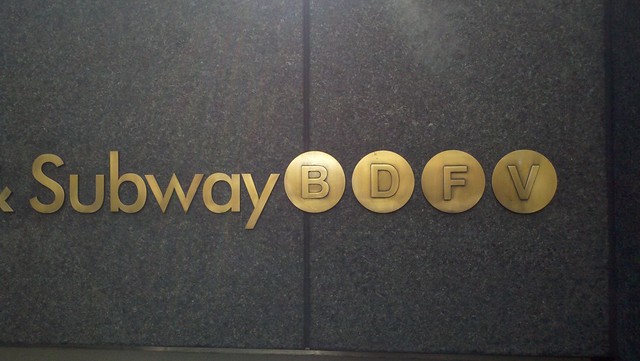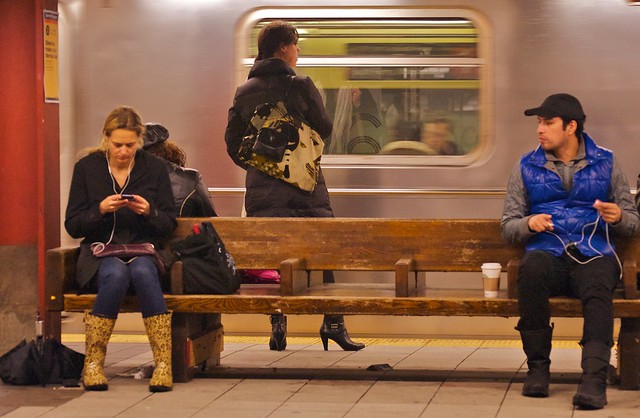I found myself on Monday afternoon at around 1:15 p.m. confronted with a daunting task. I had to walk from 50th St. between 6th and 7th Aves. to the corner of 44th St. and Broadway. I could skirt pedestrian traffic until 48th St. by using some of the midtown mid-block cut-throughs, but that still left me with three blocks on Broadway before the glorious pedestrian plaza began.
And so I readied myself for a mash of gawking tourists, slow-moving folks ambling through Times Square and workers on their lunch breaks scurrying to and fro. It was a mostly beautiful, disorganized, urban mess of pedestrians, and all was going well until those slow-moving folk became too much. At a certain point, I could have either shoved some people out of the way or come to a dead spot until the congestion cleared. It was then that the sidewalk rage set in.
The concept is a simple one, as Shirley Wang of the Wall Street Journal explored earlier this week. Behavioral scientists have discovered that pedestrians can suffer from the walking version of road rage. She writes:
Researchers say the concept of “sidewalk rage” is real. One scientist has even developed a Pedestrian Aggressiveness Syndrome Scale to map out how people express their fury. At its most extreme, sidewalk rage can signal a psychiatric condition known as “intermittent explosive disorder,” researchers say. On Facebook, there’s a group called “I Secretly Want to Punch Slow Walking People in the Back of the Head” that boasts nearly 15,000 members.
Some researchers are even studying the dynamics that trigger such rage and why some people remain calm in hopes of improving anger-management treatments and gaining insights into how emotions influence decision making, attention and self control…
Signs of a sidewalk rager include muttering or bumping into others; uncaringly hogging a walking lane; and acting in a hostile manner by staring, giving a “mean face” or approaching others too closely, says Leon James, a psychology professor at the University of Hawaii who studies pedestrian and driver aggression.
For the cool-headed, sidewalk rage may seem incomprehensible. After all, it seems simple enough to just go around the slow individual. Why then are some people, even those who greet other obstacles with equanimity, so infuriated by unhurried fellow pedestrians?
The article delves into the psychology of sidewalk strollers. The people who want to go faster get unnecessarily annoyed at those walking too slow, and while Wang and the scientists she spoke with seem to want to graft anger management issues on to everyone annoyed with someone moving slowly, I’ve always thought it’s a matter of human nature and selfishness.
We want to get where we’re going at our pace, and we expect walking to be orderly. Fast people on the left; slow people on the right. Don’t walk four across; don’t stop suddenly. It’s common decency. Yet, we don’t see aboveground, and we don’t see it underground.
Although Wang’s story focuses on the city’s streets, the findings in her piece are equally applicable underground. While walking from the lower level platforms at West 4th to the exit every day, I see disorder on the staircases. People who can barely mount the 16 steps hover on the left while other slow walkers climb up the right. Those wishing to leave with haste can fend for themselves in the middle or huff in the back. The drama plays out at every staircase and even on the climb to street level. Slower walkers do not adhere to the rule of the right.
It would be easy to generalize this behavior. Perhaps the selfishness of speed is why straphangers blast music out of leaky headphones, why they take up too many seats and why they litter throughout the subway. The researchers Wang speaks to suggest looking up and staying calm. That’s always good advice for a frustrating walk through the subway system too.








